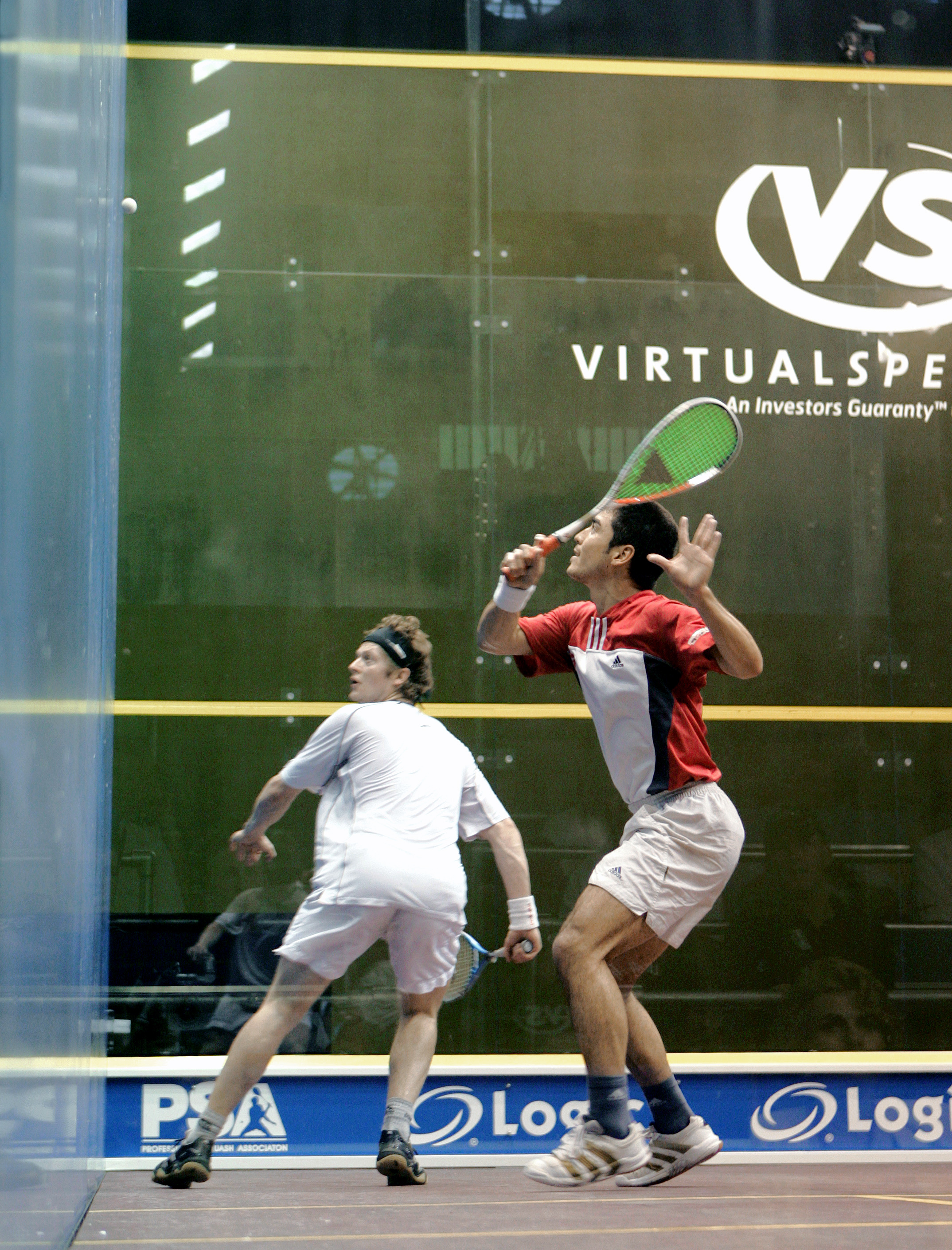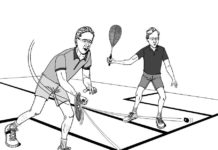By Rod Symington, WSF Referees and Rules Committee
Since I have written over 100 columns about the Rules and Refereeing for Squash Magazine it is difficult to find a new topic every month. The Editor—helpful as always—says repeatedly: “Recycle! The readers won’t remember what you wrote five years ago!”
I am loath to do that—out of respect for the intelligent readers (all three of them—plus my mother) who regularly read my column. However, it seems that writing about the Rules of Squash is like painting the Golden Gate Bridge: Once the workers have finished, they start over at the beginning again. So here is some old advice recycled—albeit in a different form.
Some years ago I wrote a column entitled “Mistakes Players Make.” This is not a repeat of that column, but here are some of my least favorite actions by players:

1. Running into the opponent and calling “Let.” You do not have the right to an automatic let by merely running into your opponent. You must be able to reach and play the ball. In fact, “playing the body” is an unfair tactic—and if there is a competent referee, you will be warned not to do it. The correct procedure is to take a direct line to the ball and to show that you would have been able to reach the ball and make a good return—and to refrain from unnecessary physical contact.
2. Waving the racquet at the ball and calling “let” (often adding: “stroke”). First, there is no need to say “stroke”: a request for a let includes a request for a stroke. Second, we can all wave our racquets (it’s a special talent of squash players—especially old and slow ones like me). You have to show that you could have actually hit the ball. If you are still five or six feet away from it, you don’t deserve a let (never mind a stroke). If you want a let (or a stroke), move to where you could have hit the ball. If the opponent is in the way of your direct shot to the front wall, it is a stroke. If the opponent clears in time (i.e., gives you the entire front wall to hit to), it is a let.
3. Not clearing. This is the cardinal sin of squash—and a particular predilection of players of advanced age or formidable girth (or both—a fatal combination: see my photo). I have stated before in these columns that squash needs only one Rule: “Hit the ball and get out of the way.” (Some people may want to add a few asterisks before the word “way.”) If you do not clear as fast as you can and give your opponent direct, unobstructed access to the ball, you are cheating. If you are simply too slow to clear and prevent your opponent’s access or shot, you lose the point. Answer: Clear in time, or change your shot-selection so that you can clear. (Watch videos of the pros to see what great defensive skills they have.)
4. Back-pedalling towards the T after playing a drop shot (see No. 3). This is a very common mistake. No matter how good your drop shot is, you do not have the right to stand and admire it, and you definitely do not have the automatic right to move in a straight line back to the T. Clear sideways in order give your opponent direct, unobstructed access. Admire the drop-shot after you have cleared and it’s a winner.
5. Hitting the ball after turning. Another cardinal sin everywhere that squash is played correctly. Please don’t tell me that you once saw Amr Shabana do it: your skills are nowhere near as good as his. And don’t say: “I know what I am doing.” No, you don’t (see previous sentence); and above all, you don’t know what your opponent is doing. It is dangerous play. You lose nothing by calling “let”—but you gain my undying respect (not to be lightly dismissed).
6. Expecting a stroke when the ball is still 12 feet in the air. This is a common situation: you hit a drop shot; your opponent hits a lob and attempts to clear. As the ball descends, you are waiting for it, and you call “let” when the opponent is still in the way of a shot to the front wall—but the ball is still out of range of your racquet, 12 feet high. By the time the ball comes within range of your racquet, your opponent is clear. It’s a let—for reasonable fear of injury.
Unfortunately, the Editor imposes a word-limit on me; otherwise, I could take up the entire magazine describing such issues. Enough for today: I have to order some more paint.





